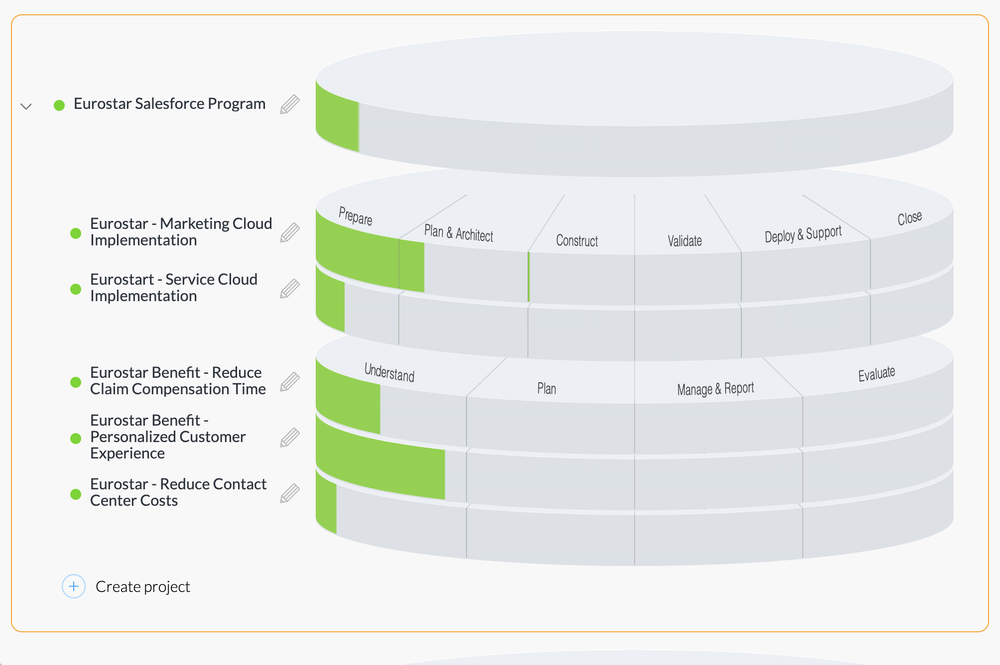Benefits Realization Management for Programs
Do you realize benefits when implementing large-scale projects and programs? I hope so, but how do you know? Do you use a benefits realization management framework for your projects and programs? If not, how would you put one together?
Today, I’ll discuss why you might want to identify and track benefits and then show an example framework you could use while implementing a large project or a program.
Before we start, let’s agree that a “program” is a group of projects intended to implement a large solution. I believe we can all agree that a deployed program solution should realize business benefits. Let’s also agree that a project that produces deliverables has intended benefits. I’ll talk mainly about programs, but you can also apply a benefits realization framework to projects. The scope would just be smaller.
We’ll start with why we implement programs. To keep it simple, let’s go with:
Solve a set of problems
Improve with new opportunities
Or both
For example, we might implement a new financial system to save costs with automation. We could build a new hospital wing to serve more patients. We could deploy a customer relationship management solution to reduce call center costs, and the time it takes to respond to customers and, at the same time, improve communication channels with customers to build a better brand.
Large programs could cost hundreds of thousands or millions of dollars. Most of the time, the pre-implement sales process identifies why we invest in such endeavors. This should include expected benefits from the end results. However, we sometimes lose sight of why we execute many projects in a program.
Problems with Skipping Benefits Management
Everyone is focused on daily project stuff like scheduling, defining, building, testing, etc. We often forget to bring the story as to why everyone is doing their work. They are doing things but could be missing the purpose. Here’s a sample list of possible issues for not formalizing a Benefits Realization Management Framework. A number of these could put the program at risk of failure.
Benefits may not align with corporate strategic goals and objectives
We lose sight of the benefits and veer off in the wrong direction
Project deliverables that have nothing to do with end benefits may be too abundant and costly
Team members not knowing why they are doing the work and, as a result, lack the spirit and a sense of purpose
Benefits are misunderstood or unclear, and the program results may not meet business expectations
There’s no way to know if the program investment was worth doing
I’m sure you could think up a number of other reasons why your program should include benefits management. So, what do benefits realization management frameworks look like?
A good benefits management framework
There are several good benefits management frameworks in the market. For example, PMI has a good benefits management overview brochure. You can purchase their PMI Benefits Realization Management Practice Guide if you want their full details. For those following Prince2 methods, they have their Prince2 Wiki Benefits Management Approach.
I chose to work with The Government of New South Wales process called the NSW Government Benefits Realisation Management Framework. This content is available for free to the public. Although it’s not as detailed as the PMI version, it might be robust enough for your programs.
The NWS Benefits Management Framework
The NSW Government Benefits Realisation Management Framework (let’s call it the NWS Framework) has four phases.
The above diagram is how it looks in Pie. The NWS Framework can easily be implemented. Read on, and I’ll show you a free tool we made for this framework.
I’ll list the NWS Framework with a simplified view of its key deliverables. The following outline would be used for one benefit, so repeat it as a separate benefits project for each benefit.
Understand phase
Name the benefit
What’s the problem or opportunity
What’s the benefit solution
Who owns it
Does it align with corporate strategy
Plan phase
What are the risks
What are the assumptions
Define the KPIs, target, and baseline
Approve plan
Broadcast the benefit to the team (Not part of NSW Framework)
Manage & Report
What governance shall we do
Map the program’s milestones to this benefit
Manage issues and risks associated with this benefit
Capture results
Evaluate
Review results against baseline and targets
What’s the variation, if any, against the business case
Capture lessons learned
Report the results
The above outline can be implemented in detail from the NWS Framework documentation. Their PDF documents present good detailed descriptions.
Possible Use Case Example
You can also use any of the many framework examples in the market. The NSW Framework is just one example, although a pretty good one. For implementation, you can create your own benefits realization management framework in your tool of choice.
To help visualize how it could be executed, I’ll give you the following examples with our Pie tool. We created a Pie recipe and added the NSW Framework content so it could be implemented as a project. I’ll explain below how you can get your free copy.
Let’s look at a fictitious example and say the Eurostar train company has engaged Salesforce to implement Salesforce Sales Cloud and Marketing Cloud solutions. This becomes a program with multiple subprojects. You could have a project for implementing key deliverables for Sales Cloud and a project for Marketing Cloud. Then let’s set up special projects to identify and manage each benefit. Each benefit would be its own project since it has its own description, baseline, target, KPIs, ownership, etc.
The following is how it could look in a project tool like Pie —
Notice we created a pie “Stack” for the program. This is where you can group the projects for program execution and oversight. Each pie is a project. Notice the first two are the solution’s implementation projects. The last three are the benefits realization management projects. This is just a short example, but in reality, this program could have over a dozen key benefits.
The following is a short video showing a subset of the NWS Framework in Pie —
If you like what you see in the video above, you can get your free Benefits Realization Management Framework recipe and use it in any Pie membership plan, including the Free Pie plan. To get your copy, go to the Benefits Realization Management Framework page on the Pie Recipe Store, and then click on the import button to get your copy. If you’re not already a Pie customer, the import button will first give you a free Pie account while it imports the benefits recipe at the same time.
You can then modify the recipe in any way that fits your organization. Feel free to reach out to us at Pie at support@pie.me if you have any questions about the Benefits Management Recipe or Pie in general.
I hope this article was useful in learning about what is a benefit realization management framework, why you need it, and how to implement it with your tool of choice or with Pie.
Written by: Paul Dandurand, PieMatrix Founder
Banner photo by: Unsplash Contributor



